Recent posts
#31
GENERAL / Re: Thickness and colour of mu...
Last post by matt - January 28, 2025, 12:49:35 PMthanks! now i found the option to set the thickness individually in the segment properties "Path width (as overlay)"
#32
GENERAL / Re: Thickness and colour of mu...
Last post by Tronpo - January 28, 2025, 11:38:52 AMHello, maybe you didn't clear the cache? And the elements They were shown as before the change.
In track properties > segments > edit segments.
You can also adjust the individual thicknesses.
Best regards
In track properties > segments > edit segments.
You can also adjust the individual thicknesses.
Whenever you make changes, delete what's on the map and load again to see the new settings.
Best regards
#33
GENERAL / Re: Thickness and colour of mu...
Last post by matt - January 28, 2025, 11:26:47 AMThank you Tronpo!
I was able to change the color individually within the track database.
Loading multiple track as "map overlay" showed the overlay in these colours.
But until now, i was not able to set "thickness", of the map overlay.
I tried:
Global Settings->UserInterface->Tracks/routes/lines/letter sizes...
Routes in the map viewer ( to experiment, i set route line widths and seconday route line widths to 24px )
I was able to change the color individually within the track database.
Loading multiple track as "map overlay" showed the overlay in these colours.
But until now, i was not able to set "thickness", of the map overlay.
I tried:
Global Settings->UserInterface->Tracks/routes/lines/letter sizes...
Routes in the map viewer ( to experiment, i set route line widths and seconday route line widths to 24px )
#34
GENERAL / Re: OruxmapsGP sin Google Play
Last post by Tronpo - January 28, 2025, 05:17:09 AMHello!! Well, Did the test, it is indeed necessary to have the session open in the play store.
I think it is a requirement that the play store stores Amazon store Huawei gallery use, for the authenticity verification of the apps
Best regards
I think it is a requirement that the play store stores Amazon store Huawei gallery use, for the authenticity verification of the apps
Best regards
#35
GENERAL / Re: OruxmapsGP sin Google Play
Last post by kunzuilh - January 27, 2025, 06:14:12 PMNo me sale un mensaje de error. Simplemente cuando abro Oruxmaps me redirige a Google Play y me dice que inicie sesión de Google. No me abre la interfaz de Oruxmaps.
#36
GENERAL / Re: OruxmapsGP sin Google Play
Last post by Tronpo - January 27, 2025, 02:23:36 PMOk, then I'll try logging out of Google To verify . Close cession on Google play and all Google accounts, browse etc, right?
Te
Is there an error message ?
Te
Is there an error message ?
#37
GENERAL / Re: OruxmapsGP sin Google Play
Last post by kunzuilh - January 27, 2025, 01:26:33 PMPues es un Xiaomi Redmi Note 12
#38
GENERAL / Re: Thickness and colour of mu...
Last post by Tronpo - January 27, 2025, 01:15:30 PMThe color of the track is the same for overlay as when used as a track
#39
GENERAL / Re: Thickness and colour of mu...
Last post by Tronpo - January 27, 2025, 01:10:47 PMHello in visual elements > track you can define color and general thickness.
And in properties of each track you can define color and individual thickness of each track.
And in properties of each track you can define color and individual thickness of each track.
#40
GENERAL / Re: OruxmapsGP sin Google Play
Last post by Tronpo - January 27, 2025, 12:52:34 PMHola , tu dispositivo es Samsung ? Siempre que leo un reporte similar viene de un Samsung .
Uso oruxmaps GP en un móvil sin conección ni sim , por lo que la cuenta o sección de Google no repercute en nada según entiendo .
Uso oruxmaps GP en un móvil sin conección ni sim , por lo que la cuenta o sección de Google no repercute en nada según entiendo .
